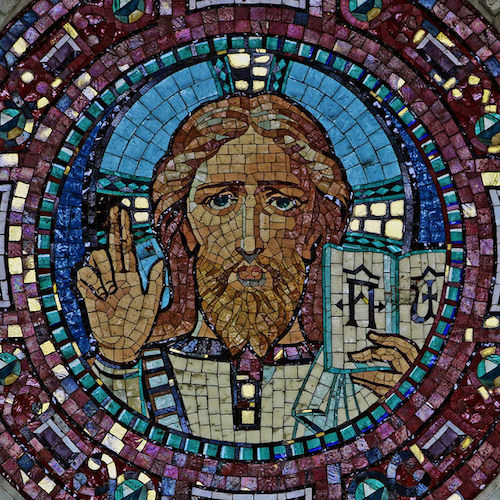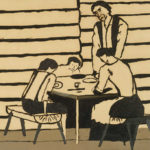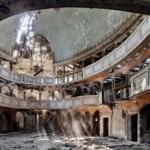We run our website the way we wished the whole internet worked: we provide high quality original content with no ads. We are funded solely by your direct support. Please consider supporting this project.

The Centrality of Christ in Hebrews, Part 1
The intense Christocentricity that the New Testament writers embrace is nowhere more clearly and consistently illustrated than in the book of Hebrews. Throughout this work we find a repeated emphasis on the many ways the revelation given to us in Christ surpasses that of the Old Testament. The author begins by stressing how the revelation of God in his own Son contrasts with and surpasses all previous revelations by virtue of the fact that the Son alone is the “radiance of God’s glory” and the “exact representation of his being” (Heb. 1:3). Consistent with this, the first ten chapters of this work are structured around Christ’s superiority:
- to angels, (1:5-2:18)
- to Moses (3:1-4:13)
- to the Aaronic Priesthood (4:4-7:28)
- to the High Priests and their sacrifices (chapters 8-10)
Reflecting this same perspective, the author sees the tabernacle erected by Moses to be a “copy” and “shadow” of the “true tabernacle set up by the Lord” (8:1-6). So too, the activity of the high priest on the day of the atonement in the OT was, for this author, the Holy Spirit’s way of “showing … that the way into the Most Holy Place had not yet been disclosed.” It thus serves as “an illustration (parabolē) for the present time” of the inferiority of the OT practices and the superiority of the sacrifice Christ makes and of the new covenant he brings (Heb. 9:8-28).
In the same way, the author of Hebrews held that “the law is only a shadow of the good things that are coming—not the realities themselves,” for the law could never “make perfect those who draw near to worship” (10:1). Only the sacrifice of Jesus—the reality to which the law and everything else in the OT points—can perfect people before God once and for all (10:10,14).
Given this perspective, we are hardly surprised to find this author discerning Christ in a wide array of OT passages. Let’s look at the opening chapter as a prime example. The author of Hebrews begins by interpreting the song that was sung at the coronation of a king (Ps. 2:7) to be a song about the enthronement of Christ (Heb 1:5). The author then goes on to demonstrate the superiority of Christ over angels by applying a reworked version of Psalm 104:4 to angels, showing them to be mere servants of Yahweh, while applying Psalm 45:6-7 to Christ, for this latter Psalm is a tribute to “God” whose “throne … will last forever and ever” (Heb 1:7-8).
And finally, to buttress Christ’s superiority over angels even further, this author goes on to apply to Christ a song about Yahweh’s work as Creator (Heb 1:10, cf. Ps 102:25-27). The circular way this author uses Scripture to prove Christ’s superiority simply reveals that he is approaching the OT with the assumption that it is a collection of works that is about Christ.
In the next post, we will explore a few more examples of how the writer of Hebrews puts Christ at the center of the Old Testament.
Photo credit: Leo Reynolds via Visual hunt / CC BY-NC-SA
Category: General
Tags: Bible Interpretation, Christocentrism, Cruciform Theology, New Testament, Old Testament
Topics: Christology
Related Reading

Podcast: Why Must God Wait for Prayer to Meet Our Needs?
Is God a bad father? Greg explores the intricacies and nuances of prayer. http://traffic.libsyn.com/askgregboyd/Episode_0404.mp3

How Reliable were the Early Church’s Oral Traditions?
How reliable were the early church’s oral traditions? In terms of assessing the reliability of the Gospels, this is an extremely important question. First century Jewish culture was what scholars today would call an “orally dominated culture.” While a certain percentage of people could read and write (see below), information was for the most part…

How To Talk about Theology
Social media is full of theological debate. Theological arguments that formerly took months or even years to get in print, now only takes the time to write a post or 140 characters and click “publish.” Social media is great in that it makes space for all of our voices. However, it also seems to elevate…

How the Church Fathers Read the OT
After the completion of the New Testament, the church fathers developed theology in their increasingly Gentile post-apostolic church in such a way that many of the distinctively Jewish features of the NT’s use of the OT diminished. However, this was not the case with regard to the Christocentric interpretation of the OT that was so…

Cruciform Aikido Pt 2: God-Forsaken Judgment
So if Jesus is the supreme revelation of what God is like, as we explained in our last post, what does that tell us about the nature of God’s judgment?
As Jesus was dying on the cross he cried out, “Eli, Eli, lema sabachthani?,” which means, “My God, my God, why have you forsaken me?” (Mt. 27:46). This shocking cry reveals…

How God Judges Sin
In his third sermon covering material from his book Crucifixion of the Warrior God, Greg explores the topic of judgment. In this clip, Greg suggests that while God certainly does judge sin, how he judges is very different than we might expect. You can view the entire sermon here on the Woodland Hills Church site. You can find the…
